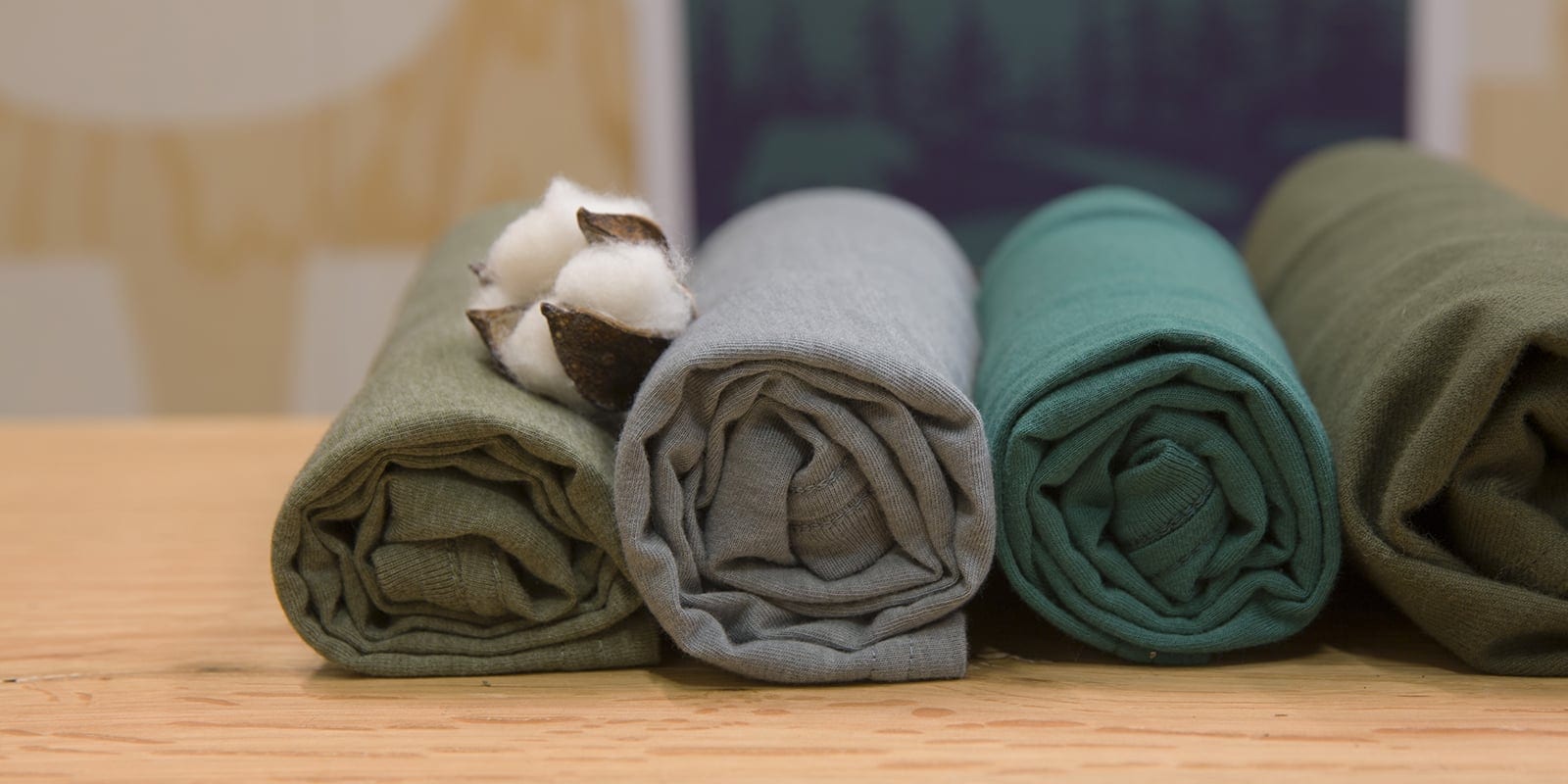While cotton's dominance in the fiber industry has waned in recent years, it's still big business for a lot of farms and factories in the U.S. and around the world. With millions of tons of it being, grown, processed and turned into the things we wear and use, cotton has a notable impact on the environment. Producers of organically grown cotton are aiming to change that.
But what exactly is organically grown cotton? This article answers that question as well as:
- Benefits of organically grown cotton
- Standards for organically grown cotton
- How to find products made with organically grown cotton
What is Organically Grown Cotton?
Organically grown cotton is grown on farms that use techniques that typically have a lower impact on the environment than conventionally grown cotton. They do not use synthetic fertilizers, herbicides and pesticides and they must follow best practices to promote water quality, energy conservation, biodiversity and healthy soil.
On the flipside, you have conventional cotton, which is typically produced using genetically modified seeds and synthetic pesticides and herbicides intended to maximize crop yields. In fact, the Organic Trade Association reports that conventional cotton uses approximately 25 percent of the world's insecticides and more than 10 percent of the pesticides to create about 20 million tons of cotton annually.
Benefits of Organically Grown Cotton
Several potential benefits of organically grown cotton, include:
- Improved soil quality: Organic farming uses techniques such as composting, cover cropping and crop rotation to build up and improve soil quality.
- Clean water: By not using synthetic pesticides and herbicides, organic farming keeps these chemicals from running off into the local water supply and potentially contaminating it.
- Water and energy savings: Using the 2014/2015 cotton harvest as a reference point, the Textile Exchange (TE) estimates that the production of organically grown cotton saves 218 billion liters of water (that's enough to fill 87,201 Olympic-size pools) and 288.7 million kilowatts of energy (enough to power almost 30,000 homes) annually compared with the production of conventionally grown cotton.
- Lower carbon emissions: TE also estimates that each year the production of organically grown cotton emits 92.5 million kilograms less carbon dioxide than the production of conventional cotton. That's the equivalent of taking nearly 20,000 passenger vehicles off the road.
- Less exposure to chemicals: Organic farming reduces consumers' and farmers' exposure to synthetic pesticides and herbicides.
Organic Cotton Standards
Several independent certification organizations set standards for organic cotton production and make sure that farms growing organic cotton meet those standards. A common standard is the U.S. Department of Agriculture's National Organic Program (NOP), which certifies farms that grow cotton organically.
For more information, visit National Organic Program.
You can't tell the difference between conventionally grown cotton and organically grown cotton just by looking at it, which is why different organizations verify the fabric content after it leaves the farm and makes its way through the production process. For example, at REI we use the Organic Content Standard (OCS) to ensure that the organically grown cotton that we buy from the farm ends up in the REI Co-op T-shirt we make without being mixed up with non-organic cotton.
Another standard, the Global Textile Standard (GOTS), not only looks at the growing and harvesting of organically grown cotton, but also at the entire manufacturing process from farm to factory. It examines things like dyeing and processing and the effects they have on workers and the environment. This means that a final product that is certified to the GOTS standard contains organically grown cotton and was processed and manufactured according to best practices outlined by GOTS.
For more details on GOTS, visit Global Organic Textile Standard.
Finding Products that Contain Organically Grown Cotton
Many brands have shifted to using organically grown cotton, making it fairly easy to find. When you're shopping in a store, look for a label that advertises that fact, or look on the product's tag for the fabric content. If you're shopping online, look in the product descriptions/specifications for this info. (REI.com lets you select this attribute as you shop.)
At REI, the majority of the cotton products sold under the REI Co-op brand are made with organically grown cotton, and we are always looking for ways to use more of it. Several other major brands sold at REI also use organically grown cotton extensively.
Shop Organic Cotton Products at REI
REI Product Impact Standards
REI has established the REI Product Impact Standards, which apply to all brands and products sold at the co-op. These standards outline our expectations of all brands sold at REI regarding how key environmental, social and animal welfare impacts are managed. The standards also identify preferred attributes—the most credible, relevant and impactful features that support positive impacts across our product offering. We encourage brand partners to use for their products, including standards covered in this article. Look for products with these features while shopping at REI to help support better ways of making gear.
Related Articles:
To learn about all of REI Co-op's sustainability initiatives, read our online Product Sustainability report.


